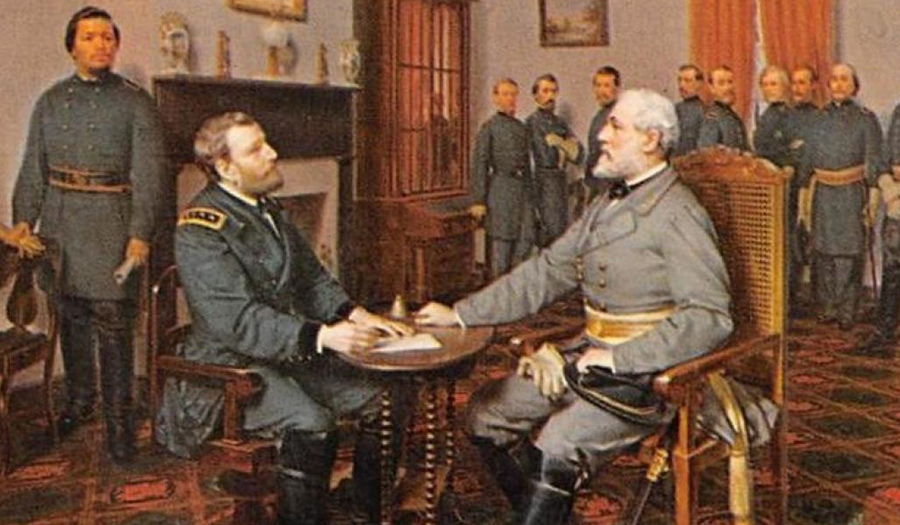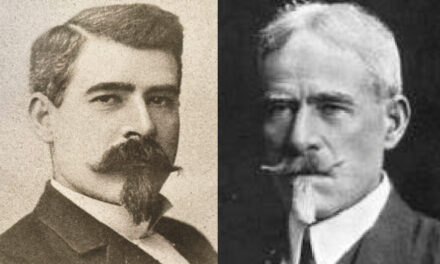
April is the month that marked both the birth and death of the Confederate States of America, intended as a nation but rendered a rebellion. As the Civil War proceeded, chewing up soldiers on both sides, Robert E. Lee moved to a leadership position, taking over the Army of Northern Virginia (ANV) and eventually, all CSA armies.
By the fourth anniversary, Lee commanded a tattered and war-ravaged group of men, most still loyal to the cause, or at least to the man whom they had followed in both victory and defeat. Commander of all the Union armies, Ulysses S. Grant had punched Lee’s army in 1864 and wouldn’t stop until he laid siege to Richmond and Petersburg, a strategy similar to how he took Vicksburg.
By April of 1865, Lee’s line numbered a man every three feet, not much resistance once a federal offensive started. With a cold winter, not enough food and depressing March rains, soldiers of the ANV were understandably less of a fighting force than they had once been. Some deserted, others stayed to see the conflict to its bitter end. That culmination awaited once Grant had his men ready for battle.

On April 2, the 9-month siege ended. A “general engagement” sent Lee’s army back on their heels, heading west. Circumstances went from bad to worse for Lee. Grant’s army imploded all resistance. The Confederate government fled Richmond. Lee hoped to unite with Joe Johnston’s troops in North Carolina. Federal cavalry cut him off from that scenario and the ANV kept its march west. April 6 was a particularly bad day when the Confederate army lost 8 generals and almost 8,000 men, a reduction of resources that made the shot even longer for Lee’s army to survive and continue.
Some estimates put the ratio of Federal to Confederate at 18 to 1. Surrounded at Appomattox and unable to get to Lynchburg, Lee had fewer than 10,000 infantrymen. Finally acknowledging any success impossible, Lee reportedly said, “there is nothing for me to do but to go and see General Grant, and I would rather die a thousand deaths,” still begrudging the fate of his army. As it turned out, Grant followed Lincoln’s wish to “let ’em up easy.” For signing an oath of allegiance to not take up arms against the federal government ever again, southern men were allowed to return home for the spring planting season. Those without horses, walked. A few weeks later Joe Johnston surrendered his army at Durham and the war was effectively over.
Lincoln visited Richmond even before Lee surrendered on April 4, saying “thank God I have lived to see this.” Ten days later he would be assassinated, attending the theater on a Friday night. His death was not the very last casualty of the war but the irony of his killing at the hands of a southern sympathizer brought a tragic crescendo to a tragic war.
Revised figures count the dead at approximately 750,000, putting the war, by far, as the most destructive in American history. Especially in the South, the conflict was costly. By the end, young boys and old men were being pressed into service.
Historians and history buffs still debate the causes. Certainly, enslavement lay at the root of just about every argument and after almost 160 years a consensus still divides the population much the same as it did during the days when it was fought.
Unfortunately, there has been no getting over this war. We still live with the animosity it created. A true end to the conflict eludes us.
Photo: A painting depicts the meeting between Grant (left) and Lee, signaling a close to the Civil War.








